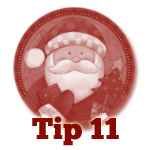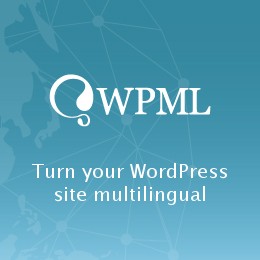 We mentioned a little bit about search engine optimisation in the previous tip, but without the long name. It is also known as SEO, and is something that has become so important in the internet industry that the phrase has also filtered down to the general public. Large companies will pay a lot of money to SEO companies to have their website optimised for very popular phrases. For the uninitiated it can be a difficult subject to grasp.
We mentioned a little bit about search engine optimisation in the previous tip, but without the long name. It is also known as SEO, and is something that has become so important in the internet industry that the phrase has also filtered down to the general public. Large companies will pay a lot of money to SEO companies to have their website optimised for very popular phrases. For the uninitiated it can be a difficult subject to grasp.
However, there are a few things you can do yourself to help your website’s ranking in the search engines. The first thing as we said in the previous tip, is to consider your user and work out what you think they would search for to find your website. There, you have your first key phrase. If it is a common phrase, e.g. ‘Property for sale’ it will produce millions of results. The biggest companies in the country would have the top ten places in the search results, and you may find your company on page 20+. The best thing you can do in this case is add a word to localize the phrase, e.g. ‘Property for sale Costa Blanca’. This will bring down the number of search results and there’s more chance of getting your website into the top ten. Think of area, city, town, county, or country.
You need to choose about three phrases for each page, then optimise the page for those phrases. Google’s keyword tool is very useful for finding similar search phrases. Once you have a few phrases, make sure they appear in the page headings whenever possible and in the content. Of course it is more important that your quality content reads well, and doesn’t have the appearance of being ‘stuffed’ with keywords and phrases.

The next step involves a little code and changing some meta tags. The title and description meta tags are the most important. These are the the words that will appear in the search engine results list for your website. (See fig 1.0). So the description is what leads people to click on your website.
It will depend on how you are building your website as to how you do this. If you are using site-builder software provided by your host, there should be options for each page to put in your keywords and phrases for title and description tags. These may or may not be called meta tags, but where ever you see options to put in title and descriptions, make sure you fill them in. Two things to note are that the title tag should be no more than 69 characters long, and the description 156 characters long.
Other things you can do to help your website’s ranking in the search engines is to create an xml sitemap and submit it to the search engines. There are tools such as google’s webmaster tools, or attracta.com to help you do this. A sitemap will help the search engines to index your website. You can also add your business details and website address to online directories. It is important that you get links from other websites back to YOUR website wherever you can. (Back-links, but DO NOT buy them.) This helps prove to the search engine that your content is useful if more places link to it.
Finally, make sure your website pages have options to share your content on social media websites such as facebook, twitter, google+, and linkedin. This allows your information to be shared widely by a network of users, and will lift your search engine ranking. There are also tools you can use to add the share buttons to your page, addthis.com is our recommended tool it includes a plugin for wordpress as well.
This is a rather long Tip for today, but SEO is such a large topic.
This is part eleven of a twenty four part series of tips provided by cannedSunlight Web Design Costa Blanca to celebrate the run up to Christmas. You can view the other tips here: Tips 1-9, Tip 10. Come back tomorrow for further tips and advice on how to get a great website that works for you or your business.






